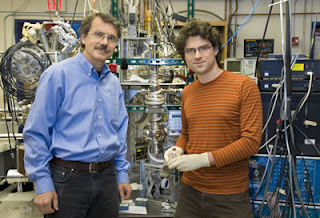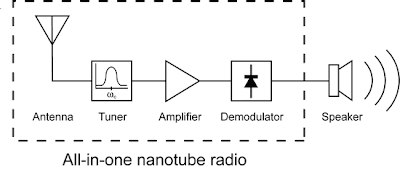Breakthrough detection technologies are already in hand in University of Idaho labs. Nanoelectronic biosensors at the university’s Center for Advanced Microelectronics and Biomolecular Research (CAMBR) recently have cut detection time for staph from the industry standard of up to three days down to three hours.
Researchers now are focused on tweaking the device so that it can provide a complete toxin profile of staph that will quickly reveal the virulence of infections. To accomplish that goal, researchers from the university’s Center of Biomedical Research Excellence (COBRE) are partnering with CAMBR scientists.
Eventually, it is hoped that even the hard-to-identify MRSA bacteria will be detected quickly using some iteration of the nanotechnology.
MRSA’s resistance to antibiotics has earned it “superbug” status. It is responsible for more 94,000 infections and 16,000 deaths annually in the U.S. alone, according to recent Center for Disease Control reports. Those numbers indicate it is a greater health threat to Americans than the AIDS virus.
The spiking MRSA death toll recently reported by the Center for Disease Control presents formidable motivation to move infectious disease research ahead, and to get life saving nanotechnologies into the marketplace. University of Idaho scientists are focused on both goals.
The CAMBR Biosensor The vast majority of hospitals, including all regional facilities in Coeur d’Alene, Idaho, and Spokane, Wash., still culture staph in Petri dishes. The culture usually takes one to two days to mature until it is identifiable. CAMBR biosensors identify staph within three hours, with an equally astounding increase in accuracy. The device already has successfully detected the staphylococcus aureus 16S rRNA gene, 16S rRNA, and enterotoxin B, as well as a biomark for lung cancer.
“Our electronic detection capability is approximately 1,000 times more sensitive than the chemilumine technologies currently being used in clinical laboratories,” said Wusi Maki, principal investigator for CAMBR biomolecular research.
“Our plan is to work with Professor Greg Bohach and use the nanosensor CAMBR has developed to provide a toxin profile that will tell us very quickly, and very accurately, if we are looking at lethal or just mild staph,” said Maki.
Bohach is principal investigator and director of the COBRE in the university’s Department of Microbiology, Molecular Biology and Biochemistry (MMBB).
There currently is no method available to quickly and accurately judge the virulence of staph bacteria, Bohach noted.
Finding effective “capture molecules,” those that adhere specifically to staph and its toxins, is key to creating a biosensor-generated toxin profile and insights into the virulence of specific staph infections.
Finding an RNA Fragment in a Molecular Library Stack University of Idaho MMBB graduate student Ryan Dobler has been working with Bohach and scientists at CAMBR labs to identify and replicate capture molecules. Specifically, he has been searching through a vast molecular library looking for an aptamer molecule, “a piece of RNA that binds to a target,” Dobler explained.
His work has confirmed that the large pool of RNA fragments he studied are binding; specifically, that they attach to fibronectin binding protein. “Fibronectin binding protein is a unique protein that’s found on the surface of staph bacteria,” Dobler said. “It helps bind the staph to human tissue.”
The research has not yet yielded an aptamer that would most effectively and most specifically recognize staph. In his year-long investigation, Dobler tested about 80 samples among the thousands that may yield results.
He is writing up his research, and will present his findings in his master’s thesis in December. Bohach, Maki and their teams hope to find funding to continue the study.
“A good example of capture molecules are those that attach themselves to the toxins that staph makes,” Bohach explained. “We hope to identify particularly those toxins that are associated with the more virulent strains, including MRSA strains. There’s quite a bit known about the toxins, and we can – in a limited number of steps – screen and isolate staph for many different toxins at the same time.”
“So if you’re looking specifically for MRSA, you could look for those bacterial molecules that are associated with it, and through that unique association, identify it with precision,” he said.
As the research progresses, capture molecules for a variety of identifying toxins will be incorporated onto the biosensor, which will quickly read and accurately translate the toxin profile.
Using staph Pathogenesis as a Treatment Delivery System
Bohach and others members of his team also are looking at the mechanisms staph bacteria employ to enter host cells and proliferate.
Using nanowires and other nanomaterials (NMs), they aim to hijack the methods bacteria use for toxin delivery, and use them to deliver drug therapies specifically to infected cells.
Bohach is working with University of Idaho professor of physics and materials engineer David McIlroy, microbiologist Carolyn Hovde and others to develop nanowires and other nanomaterials (NMs) for use as innovative drug delivery systems.
McIlroy leads a team of seven researchers supported by the university’s Blue Ribbon Strategic Initiative funding. Their goal is to integrate nanonmaterials research with cell biology and bioscience research.
The Idaho researchers have found that NMs penetrate tumors easily, and can do so coated with antibodies or other materials that seek and destroy infected cells, while sparing normal cells.
They are looking for ways to enable NMs to more readily penetrate the targeted cells, and they report that nanowires coated with the protein fibronectin penetrate cells more easily than uncoated nanowires. In experiments with human and animal cells, they have illustrated that coated nanowires can enter and deliver a toxic agent (StxA1) that kills the cells.
Microbiologists Bohach and Hovde work with CAMBR scientists including: Maki, biochemist; Shiva Restage, organic chemist; Miramar Mishap, surface chemist and nanofabrication expert; and Brian Filanoski, a biochemist studying optical detection of bio-agents.
University of Idaho CAMBR biosensor breakthroughs have recently generated two patent applications. The technology is at the demonstration phase and work is needed to bring it to a marketable system, said Maki. “All the building blocks are in place to produce a real system. With the right investment and focus, the technology could be made ready by the teams in Post Falls and Moscow in a few years," she said.
The technology developers have experience delivering commercial technologies, and that task is within the charter of the CAMBR organization, she added.
Once developed and adopted for use in hospitals, biosensors would impact both those who test positive and those who test negative for the bacteria. For the duration of the current one to three day wait for a staph culture, hospitals must isolate the patient. Insurance seldom covers that expense, so patients and hospitals currently pick up the hefty tab.
“There is an immediate need for faster, more accurate staph detection,” said Maki. “Quick identification in hospitals could save many lives, and millions of dollars.”
###
About the University of Idaho
Founded in 1889, the University of Idaho is the state’s flagship higher-education institution and its principal graduate education and research university, bringing insight and innovation to the state, the nation and the world. University researchers attract nearly $100 million in research grants and contracts each year; the University of Idaho is the only institution in the state to earn the prestigious Carnegie Foundation ranking for high research activity. The university’s student population includes first-generation college students and ethnically diverse scholars. Offering more than 150 degree options in 10 colleges, the university combines the strengths of a large university with the intimacy of small learning communities. For information, visit www.uidaho.edu.
Additional staph Research and Partnerships:
University of Idaho COBRE co-principal investigator, Mark McGuire, professor of veterinary science, is researching S. aureus’ ability to grow and produce a wide variety of virulence factors, and their roles in the establishment and progression of diseases such as mastitis. Specifically, he is studying glycerol monolaurate (GML) and lauric acid, which have been shown to have inhibitory effects on the production of several virulence factors, and inhibits the growth of staph bacteria.
Washington State University's Larry Fox focuses his research on the microbiology and pathology of clinical mastitis in dairy cows, and toward an increasing management emphasis to reduce its economic impact on farms. Fox has been an active member and leader of the National Mastitis Council and other ADSA and USDA committees.
Bill Davis is the director of the WSU Monoclonal Antibody Center and the Flow Cytometry Facility. The Center’s program in immunology is focused on analysis of the mechanisms regulating the immune response to infectious agents and derived vaccines.
Contact: Joni Kirk joni@uidaho.edu 208-885-7725 University of Idaho
Technorati tags: Public Domain Clip Art and clip art or public domain and methicillin resistant Staphylococcus aureus or MRSA or Rememberance Hanukkah 5768 and Merry Christmas from Santa Claus and Using Supercomputers To Make Safer Nuclear Reactors





























